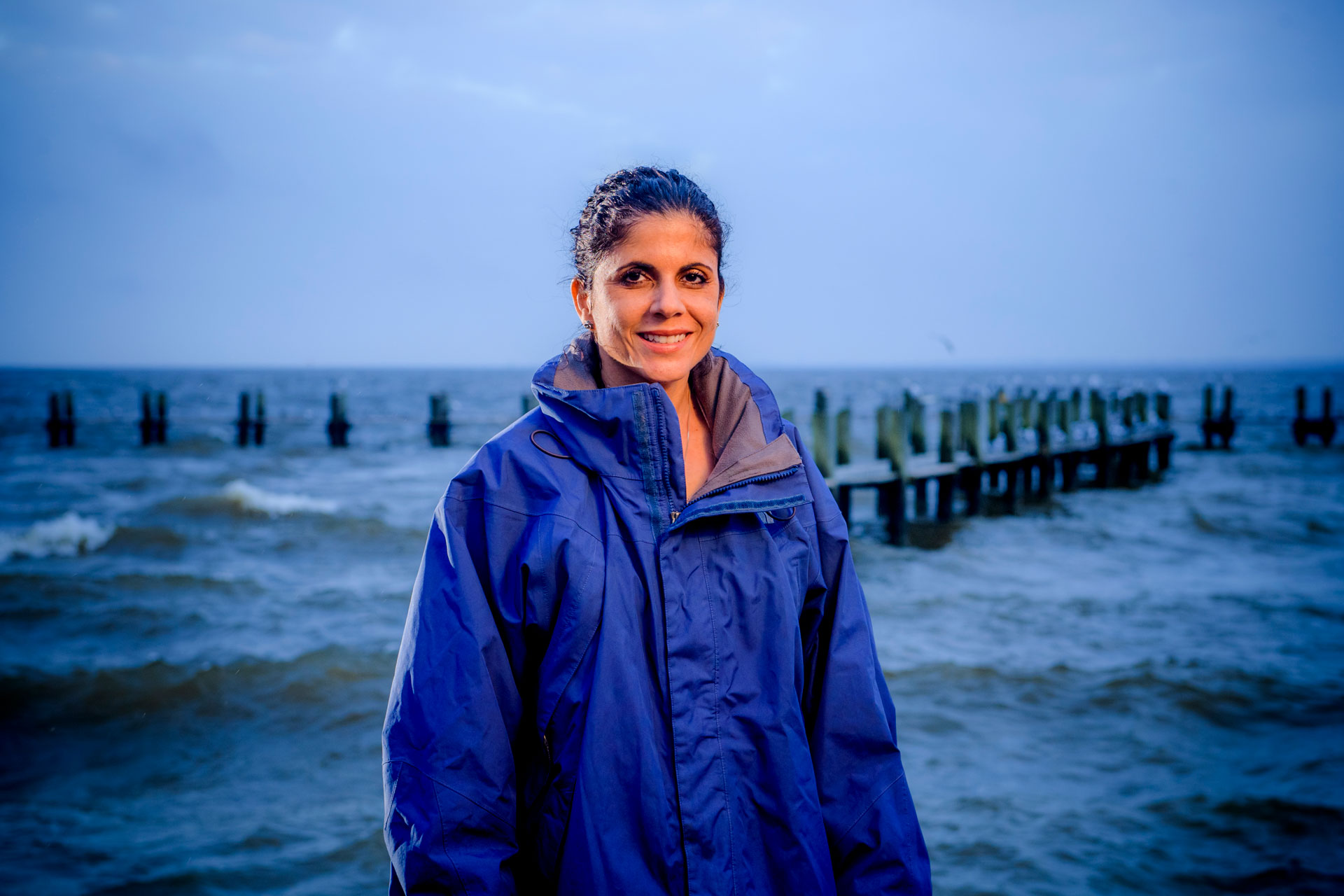- Future Students
- How to Apply
- Visit UHCL
- Admitted Students
- Tuition, Costs and Aid
- Degrees and Programs
- Contact Admissions
- Current Students
- Class Schedule
- Academic Calendar
- Advising
- Events
- Library
- Academic Resources and Support
- Student Services and Resources
- Alumni
- Lifetime Membership
- Alumni Events
- Update Your information
- Awards and Recognitions
- Give to UHCL
UHCL biotechnologist eyeing damage to Gulf coral reefs
May 25, 2018 | Jim Townsend

What happens when a coral reef gets sick and dies? Less biodiversity, less food for fish. Fewer fish, less commercial and recreational fishing. Less fishing, fewer related jobs, fewer tourists. Worse can occur, says the National Oceanic and Atmospheric Administration: Many reefs protect coastlines from breaking waves. More wave energy, more coastal erosion, more storm surge, more flooding.
For all these reasons, University of Houston-Clear Lake biotechnologist Lory Santiago-Vazquez is keeping close watch on the Flower Garden Banks National Marine Sanctuary, a system of coral reefs about 100 nautical miles east of Galveston in the Gulf of Mexico. The sanctuary provides habitat for many threatened and protected species – corals, sharks, rays, sea turtles and marine mammals – as well as several species important to the fishing industry.
Santiago-Vazquez is an associate professor of biology and biotechnology, as well as chair of UHCL’s biotechnology program. She uses biotechnology to study environmental issues.
Following Hurricane Harvey in August 2017 – which dumped an estimated 24.5 trillion gallons of water over Southeast Texas and southern Louisiana – the National Science Foundation funded an investigation into what impact the hurricane had on the environmentally protected reefs. Specifically, Santiago-Vazquez and collaborators from Rice University, Boston University and Texas A&M University are comparing the adverse effects of Harvey’s runoff with those recorded after Houston’s 2016 Tax Day flood.
By sampling microbial communities, she is looking for commonalities between those events in an attempt to determine the trajectory of the reefs’ recovery or decline.
Her data will help inform strategies for managing coastal ecosystems and those whose livelihoods depend on fishing and tourism to plan for and minimize disruption following strong storms. Ultimately, it will help assess ecological threats and human health risks.
Santiago-Vazquez’s primary research focus is on the study of sponges and gorgonians, the latter of which includes creatures commonly called sea fans and sea whips. She also analyzes the stress responses in these organisms that lead to “bleaching” and/or disease.
After Houston’s historic spring floods of 2015 and 2016, plumes of polluted ground water poured into the Gulf, lowering the seawater’s salinity in its path and distressing the delicate balance of life on the reefs, 60 feet below the surface.
In 2016, divers recorded the growth of microbial “mats” – white layers of what may be bacteria colonies infesting some reefs in the sanctuary. The divers also noted what appeared to be an increase in coral bleaching. When the water gets too warm or too cold, coral expels the algae living in its tissues, turning the coral white. The coral isn’t dead, rather, under stress. Some bleaching is normal and the coral often recovers, Santiago-Vazquez said. She wasn’t on that dive, she said. From divers’ photos, she observed little bleaching beyond what is considered normal.
Soon after Harvey, Santiago-Vazquez and her colleagues traveled to the Flower Garden Banks to assess possible damage. At the time, observed affects were minimal.
“There were some areas that were questionable,” she said. “Granted, the coral coverage is so huge down there that we couldn’t see everything. What we saw looked OK except for a few areas.”
However, it might have been too soon to tell. “The floodwater, as it travels down the Gulf, takes time,” she said, and noted that freshwater is lighter than saltwater. “It doesn’t ‘mix’ right away. It goes on as its own body as it travels through the ocean.”
By using electronic buoys to measure salinity changes, her A&M colleagues were able to track the plume’s progress as it approached the sanctuary. The researchers had intended to return to the reefs this April, but the trip is postponed to early August.
Santiago-Vazquez is the first to admit she never imagined herself in a laboratory. “I am a marine biologist,” she said. “I was trained in pure ecology. But as I progressed in my graduate career, I got involved in marine pharmacology,” where she genetically manipulated marine microbes to make anti-inflammatory and anti-cancer drugs.
That path eventually led Santiago-Vazquez to teach and lead the biotechnology department at UHCL, which offers a master of science in biotechnology degree with concentrations in molecular biotechnology, bioinformatics and computational biology, and biotechnology management.
Besides pharmacologists, graduates in this degree can work in academia, government and private industry as geneticists, microbiologists, biomedical engineers, biochemists, biophysicists, microbiologists, epidemiologists, food scientists, soil and plant scientists and in many other new, emerging fields.
For more information about UH-Clear Lake’s biotechnology programs, visit www.uhcl.edu/biotechnology.






